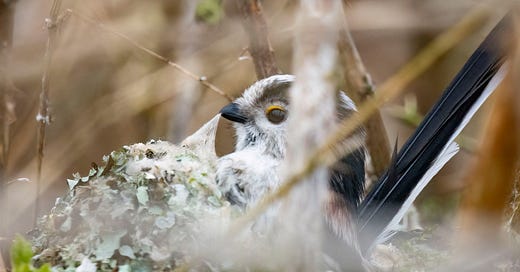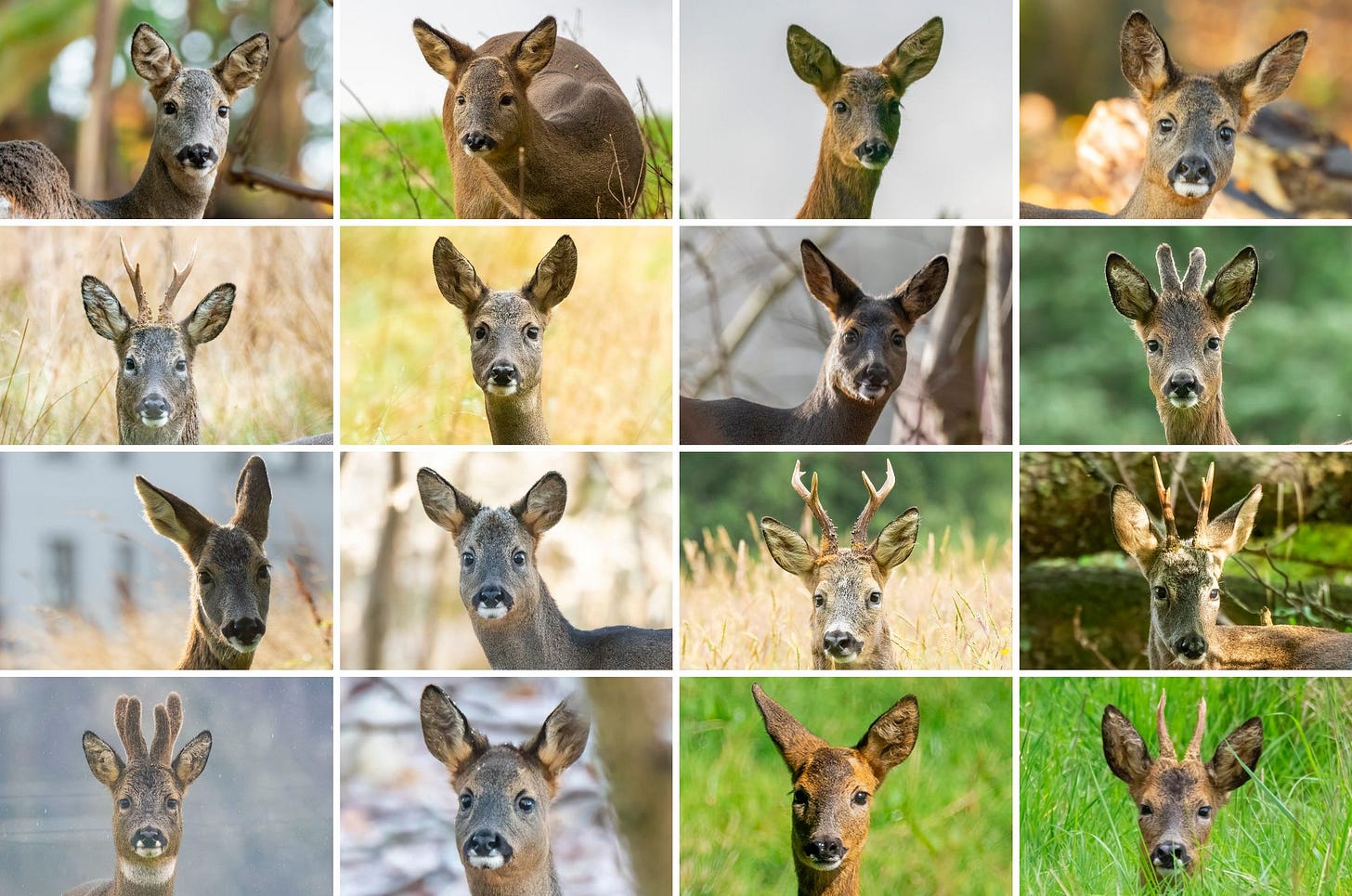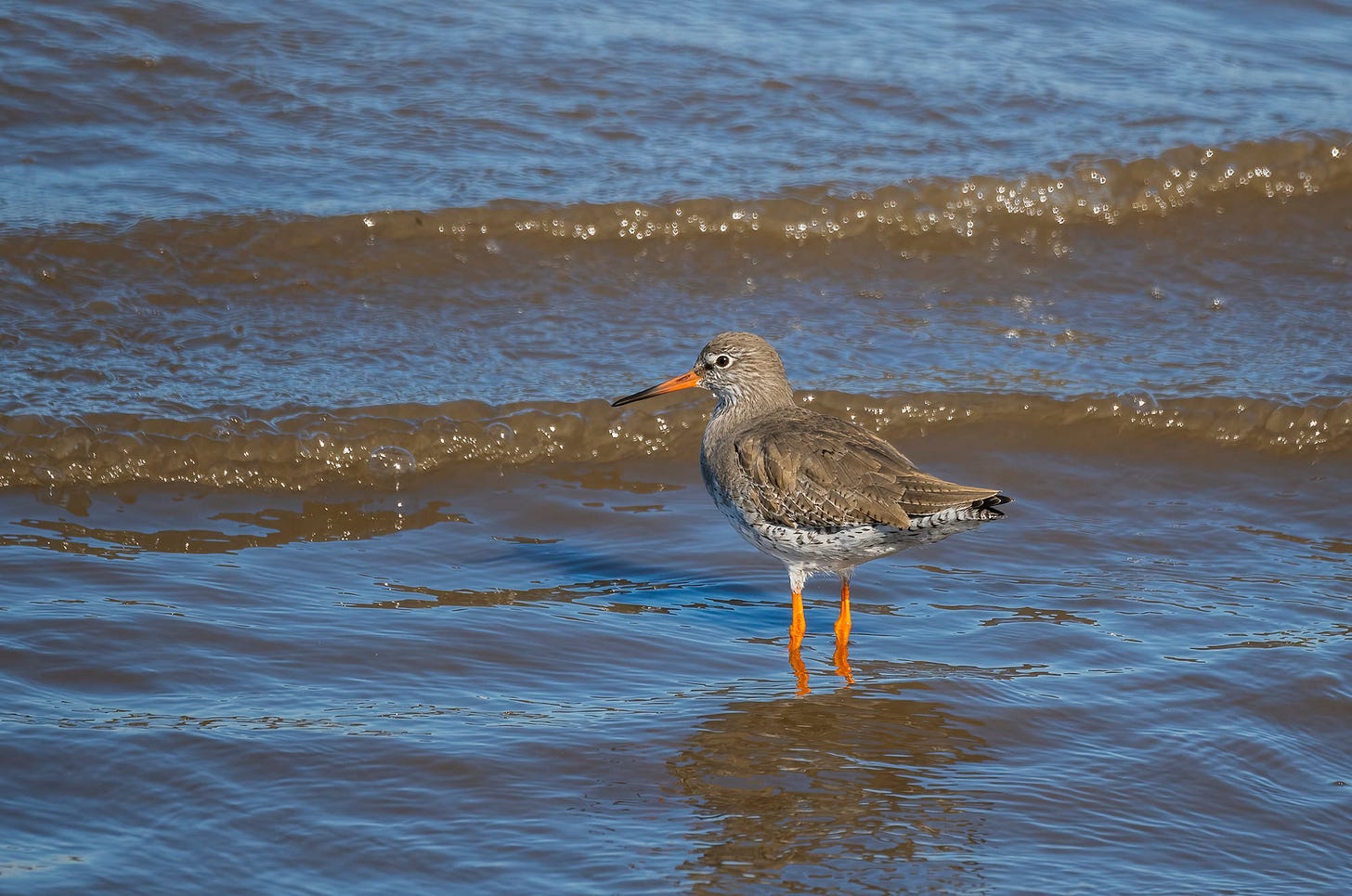March 2024 Viewfinder
There are changed plans, and plans for change, in this month's Opposite View Wildlife Photography newsletter.
Herring gulls glide by effortlessly. I watch them from the sofa with my knee propped up under numerous cushions. It has been that kind of week.
As I sit in Anstruther writing this while nursing my swollen knee when I should be on Arran, I am reminded of the quote that is partly behind the name of my website (the other is that it's also the title of a song by Del Amitri - my favourite band):
“There are things I can't force. I must adjust. There are times when the greatest change needed is a change of my viewpoint.”
Denis Diderot
March has been proof of this need to take the opposite view. Yes, we had to cancel our planned holiday to Arran less than 24 hours before we were due to set sail due to bad weather, which was incredibly disappointing, but here we are in Anstruther now, and I feel lucky and grateful. Don't get me wrong, when I politely asked if we could be booked onto another ferry in a day or two and was told all ferries to the island were booked up for at least a week, I wasn't feeling particularly lucky or grateful. In fact, after the stresses and strains of the past year or so, I had placed a lot of importance on this holiday. It was the chance for me and my partner to finally relax in a cottage in front of the sea, with a waterfall next to it and red squirrels visiting the garden.
The thought of our first proper break in ages sunk like this felt like the last straw for my anxiety levels, which had been frustratingly high for the past six months. But, as well as being an anxious stress head, I can also be pretty organised. I quickly hit the Google search bar hard until a cottage in Anstruther turned up to avoid us wasting a week off work by sitting at home watching Bargain Hunt (although I do love a bit of Bargain Hunt).
So, here we are. And yes, I've jarred my knee for the millionth time. And yes, we have had tremendous downpours of rain at times. But we have also had sunshine, coastal walks, fish and chips, and unexpected urban fulmars (more about that another time, I promise). Most importantly, we have relaxed. It turns out that our initial mood of despondency about the last-minute change of plans wasn't necessary after all.
Earlier in the month, I’d had similar feelings of frustration when the roe deer - my local patch subjects of choice - altered their daily movements, meaning I stood next to no chance of getting decent views of them on my lunch break from the day job. One day, after showing up at my usual spot to see the sight of their pristine white tails ambling over the brow of a hill where I couldn't follow, I decided to give up quickly and took the longer walk back home.
As I passed by bare bramble bushes on the river bank, I noticed a pair of long-tailed tits bouncing into the tangle of thorny branches. I paused to see if I could capture images of them and that was when I discovered why they were so focused on a particular bush. In it, they were constructing the most beautiful nest I have ever seen. While I stood still on the path watching them, I fully expected them to react to my presence. But they were busy building and didn't seem to care that I was there. In the coming days, the long-tailed tits stole my attention, and I spent lunch breaks photographing their pain-staking work as they prepared to become parents. It's always worth stopping to look; you never know what you might find to point your lens at.
The beginning of spring is a time of change and a period that always seems to pass by in a flash. This one has taught me to keep an open mind and enjoy the opportunities that present themselves - even if they weren't the ones I'd planned for. Diderot was right.
Dark clouds are rolling in, and the forecast tomorrow is mixed, but we’ll enjoy our time by the coast, no matter what. Besides, it's nearly time for me to limp to a local restaurant for dinner - another holiday perk.
So, I'll leave you for now with one of the images of the long-tailed tits. The use of back-button focus was key in capturing these photos. As you can probably tell, I had to shoot through numerous branches crisscrossing in front of the nest, and I had a tiny window through which to frame the activity of the birds. Using back button focus, I locked focus on the middle of the nest and then captured bursts of images each time the parents appeared. I also stopped down to f8 to increase my chances of getting the birds sharp. There were many failed attempts, with the faces of the parents obscured by the branches and images where the focus wasn’t quite right. But, after hundreds of shots taken, there were a good number I was happy with. Hopefully, there will be fledglings to photograph soon.
Best wishes,
Rhiannon
Opposite View Wildlife Photography
Through my lens
ID(eer) parade - using images for identifying individual roe deer
When I first started photographing the roe deer on my local patch, I had the misconception that all roe deer pretty much looked the same. There were obvious differences between males and females - especially when the bucks had their antlers. But apart from those differences, I assumed they appeared - and acted - very much alike. Once I started to spend time with the deer, I realised that not only did they all have different personalities, but they also had distinctive features. I'm not talking about the shape of their antlers or even specific markings, but - more surprisingly for me - they had different face and body shapes, and these seemed to run in the family.
In this blog, I share how I'm using my images of the local roe deer to chart their progress and build my understanding of their behaviours.
Species Spotlight
Redshank - the wader on red alert
The turnstones remained relaxed as I sat motionless on a seaweed-covered rock. While they rooted around for food, they shuffled ever closer, engrossed in their task. I watched them through my lens, occasionally depressing the shutter when they hopped onto a mound of grass, and the opportunity presented itself for a clean shot. Dog walkers and families headed along the coast path behind where I had positioned myself, but the turnstones - and oystercatchers behind them - mostly kept their heads down, unconcerned. Then, out of nowhere - and for no obvious threat that I could see - the alarm call sounded. The familiar piping ‘teu-tu-tu’ sent everything into the air, including the turnstone I had my lens pointed at. The “watcher of the marshes” had struck again.
In this blog, I explain how the redshank got its reputation as warden of the wetlands and share images and footage of these watchful waders.
And finally…
The winners of this year's Scottish Nature Photography Awards have been announced, and I'm delighted to share that I was shortlisted in the Scottish Wildlife Behaviour category with the image shown above of a bankside orb weaver spider and its damselfly prey (called Ex-damsel in distress).
This is the first time I've reached this stage in any photography competition, and it was a wonderful surprise. Even more so because this image will appear in the yearbook - the first time I've had a photo printed like this. To say I'm over the moon is an understatement.
Huge congratulations to all the winners and other shortlisted entrants - it is an incredibly tough competition.
If you want to know the story behind my shortlisted image, please look out for April’s newsletter, as I’ll be blogging about it next month.
Keep in touch
Thanks for reading this! If you have any comments or questions, opportunities for photography or if you would like to use any of my images, please leave a comment. I’d love to hear from you.
You can also follow me on:







